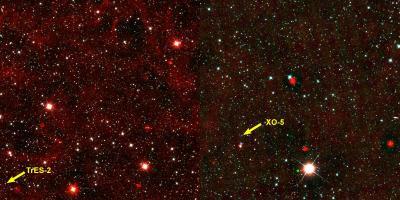Astronomers from the University Jena have found a stardust belt in extra-solar planetary systems.
The debris discs are remnants of the formation of the planets. This dust is of greatest importance for astronomers, because it helps to draw conclusions about planet formation. There are two debris discs in our solar system, the asteroid belt and the Kuiper belt.
What makes the discovery special is the tremendous distance from our solar system to the stars with the debris discs. The particular focus is on TrES-2 in the Draco constellation and XO-5 in the Lynx constellation. Planets orbiting these stars can only be detected with the help of the transit method. It sounds like a simple principle: The night sky is photographed in regular intervals. Special software then checks the brightness of the stars on the images. If, in regular intervals, there are differences in brightness it is likely that a planet passes between the star and its observers.
The astronomers found evidence for the stardust with the help of photometric analysis. At first the characteristics of the stars can be analyzed with it. If there are irregularities in the invisible infrared range, they point to the existence of stardust. Alexander Krivov says, "The dust is warmed up by the star and radiates heat. We see that radiation curve is above the radiation curve of the star as a clear sign of the existence of stardust."

Astronomers found a stardust belt around the stars TrES-2 in the Draco constellation and XO-5 in the Lynx constellation.
(Photo Credit: WISE Image Service)
Professor Krivov draws an impressive comparison for the search of debris discs in the vastness of the universe: it is as if you would detect an ice-cream cooled down to minus 130 degrees with a heat detector in a 5,000 kilometer distance from Jena.